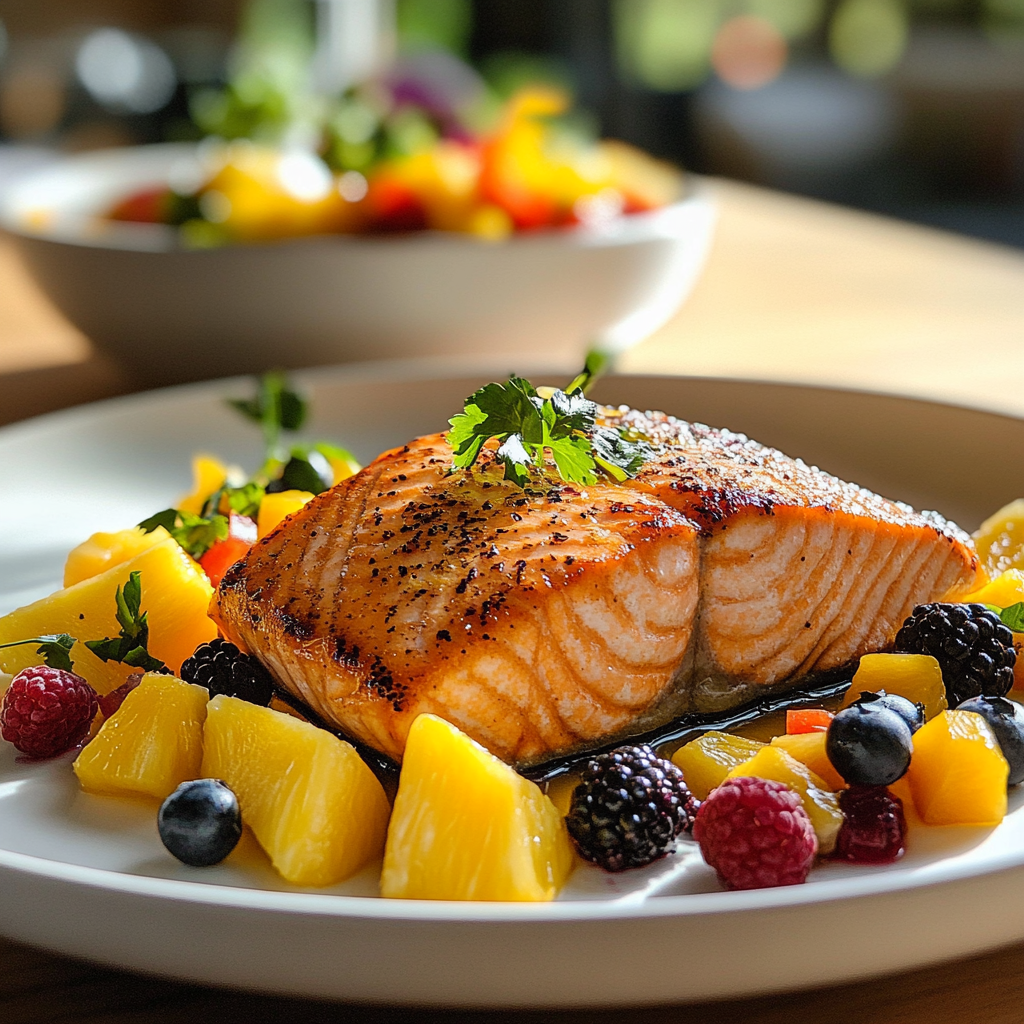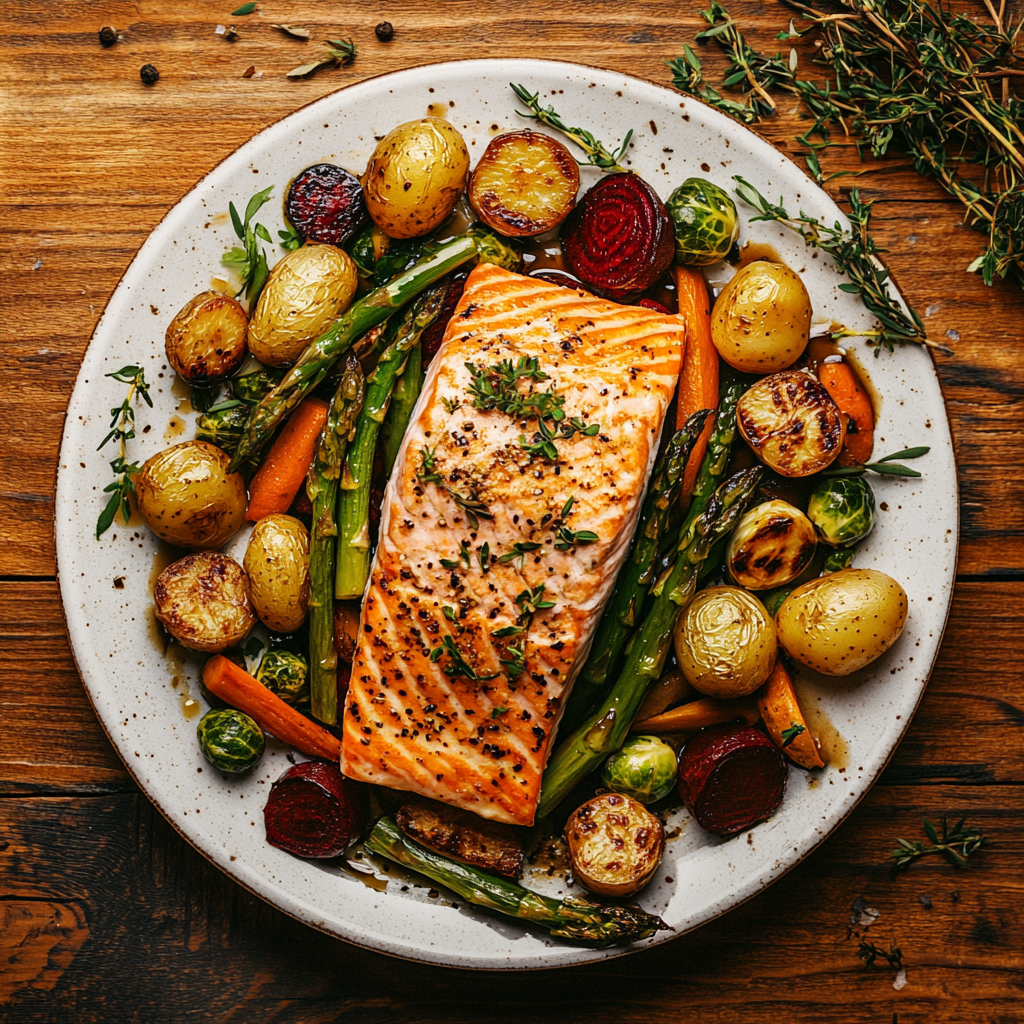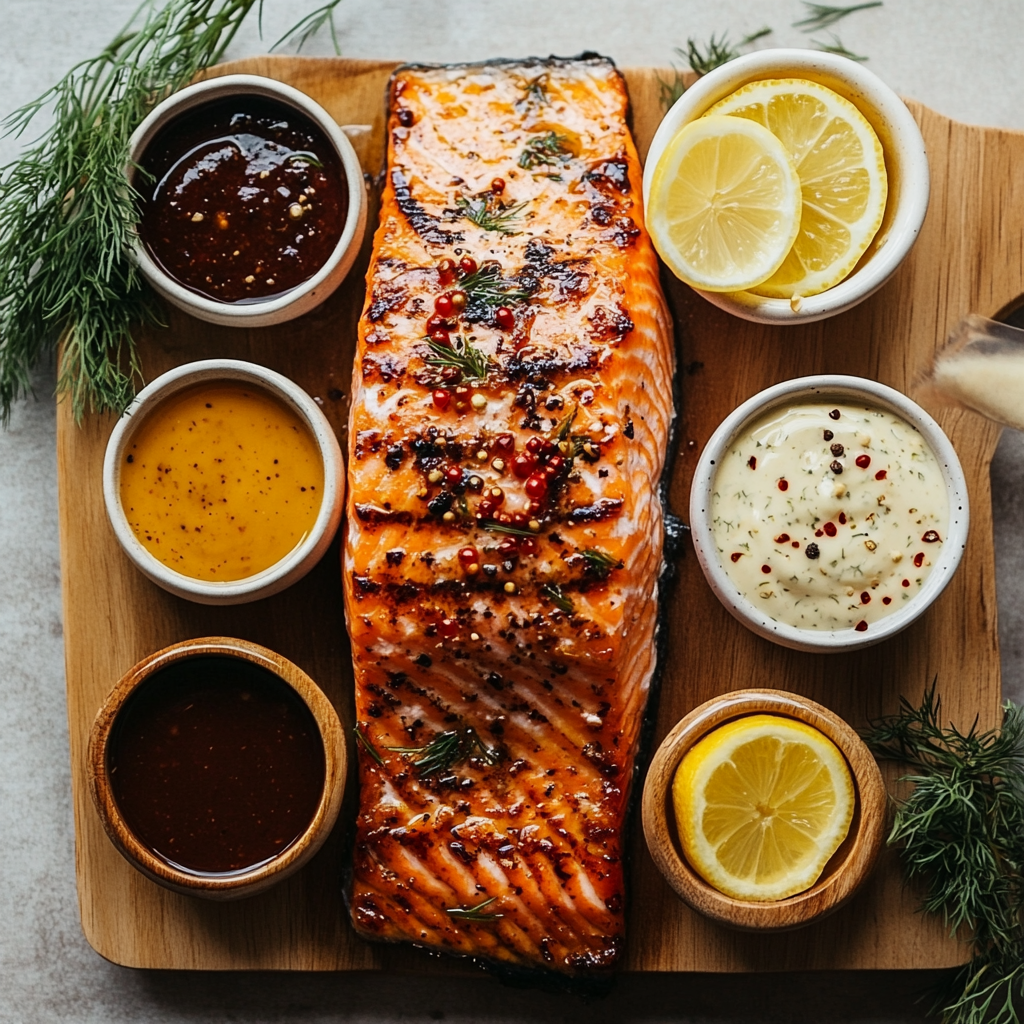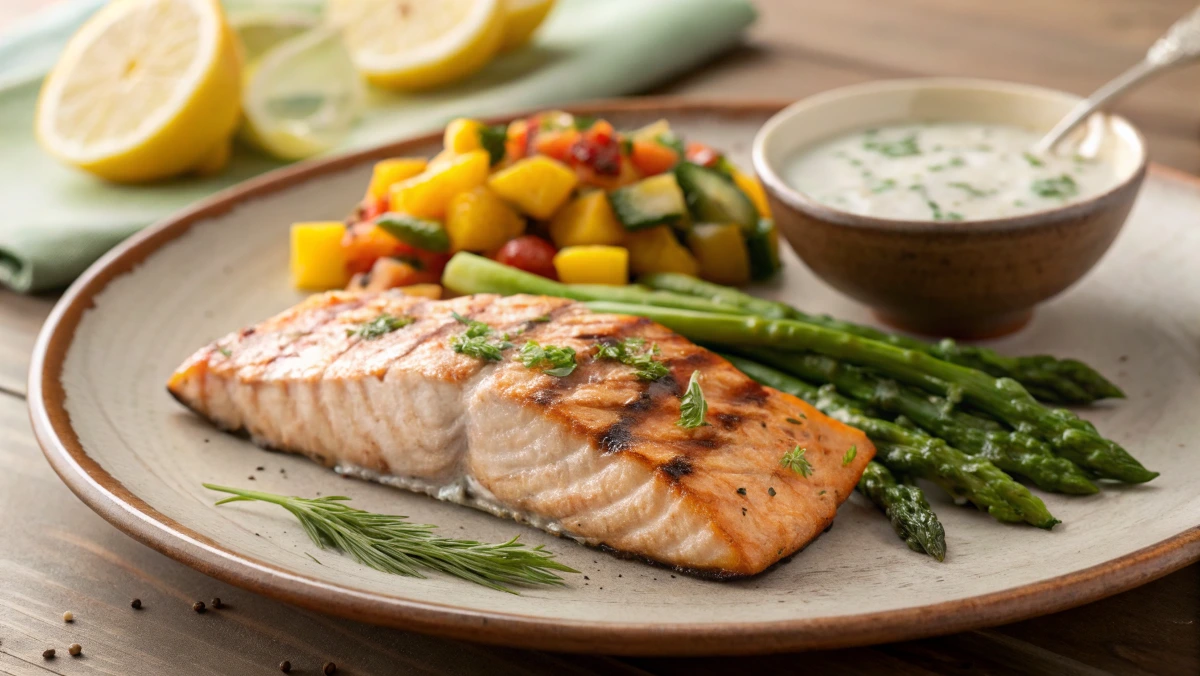Understanding What Mixes Well with Salmon
Salmon is a versatile and flavorful fish that serves as the centerpiece for a wide variety of dishes. It adapts well to numerous cooking techniques, such as grilling, baking, and poaching. But what mixes well with salmon to make it shine? Its rich, slightly oily texture pairs beautifully with ingredients that balance its natural flavors. Whether you prefer bright, tangy additions or earthy, robust notes, there are endless ways to complement salmon.
For a perfectly balanced dish, what mixes well with salmon often includes acidic elements that cut through its richness. This can include citrus fruits or vinegar-based marinades. Additionally, creamy sauces or butter-based glazes create a luxurious texture that contrasts its firm flesh. Salmon’s adaptability to both bold and subtle flavors makes it an excellent choice for various cuisines, from Mediterranean to Asian-inspired dishes. Its nutrient profile, rich in omega-3 fatty acids, ensures it remains a healthy option for any meal.
Herbs and Spices!! What Mix Well with Salmon
When considering what mixes well with salmon, herbs and spices are essential for unlocking its full potential. Fresh herbs like dill, parsley, and chives bring a bright, fragrant touch that complements salmon’s natural flavors. These herbs work especially well in marinades, sauces, or garnishes.
Spices are another way to create complexity in salmon dishes. Popular choices include:
- Paprika: Adds a smoky depth, ideal for grilled salmon.
- Cumin: Lends an earthy flavor that pairs well with citrus marinades.
- Cayenne: Offers a gentle heat, perfect for spiced rubs.
For an optimal seasoning blend, combine garlic powder, onion powder, salt, and pepper with a touch of lemon zest. This simple yet effective mixture highlights salmon’s richness while adding subtle layers of flavor. Ultimately, the right combination of herbs and spices ensures salmon remains the star of any meal, whether served hot or cold.
Fruits: What Mix Well with Salmon

When exploring what mixes well with salmon, fruits offer a surprising yet harmonious pairing that elevates the dish’s flavors and presentation. The natural sweetness and acidity of fruits provide a perfect balance to salmon’s richness, creating a delightful contrast that enhances the overall dining experience. Whether you’re seeking bright, zesty flavors or sweet, complex undertones, fruits are a versatile addition that complements salmon in various ways.
Citrus Fruits: Bright and Refreshing
Citrus fruits like lemon, lime, and orange are classic choices that brighten salmon dishes with their zesty, tangy profiles. Lemon wedges or lime juice drizzled over grilled salmon add a burst of freshness, while orange segments can be used in salads or as a garnish. These fruits not only cut through the fish’s oiliness but also enhance its natural flavor without overpowering it.
Tropical Fruits: Sweet and Tangy
For a touch of sweetness, tropical fruits like mango, pineapple, and papaya are excellent options. Mango salsa, made with diced mango, red onion, and cilantro, is a perfect topping for seared or baked salmon, adding both flavor and texture. Pineapple can be used to create a caramelized glaze when baked with the fish, delivering a tangy-sweet balance that pairs beautifully with salmon’s savory profile. Papaya, with its mellow sweetness, works well in salads alongside salmon for a refreshing twist.
Berries: Tart and Complex
Berries, such as raspberries, cranberries, and blackberries, bring a tart complexity that works particularly well with grilled or smoked salmon. Raspberry reductions or cranberry chutneys are excellent accompaniments, offering a bold and vibrant contrast. Blackberries can be paired with salmon in salads or sauces for a burst of flavor and color, adding a gourmet touch to the dish.
Creative Uses of Fruits
Fruits can be incorporated into salmon dishes in numerous ways:
- Salsas: Combine fruits like mango, pineapple, or even pomegranate with herbs, lime juice, and a hint of spice for a fresh and vibrant salsa.
- Glazes: Create fruit-based glazes with ingredients like orange juice, honey, and spices for a caramelized finish.
- Garnishes: Use thin slices of citrus or fresh berries as an eye-catching garnish that complements the flavors of the dish.
By integrating fruits into your salmon recipes, you not only add layers of flavor but also make the dishes more visually appealing. These combinations showcase the adaptability of salmon, making it an excellent centerpiece for creative and flavorful meals.
Vegetables: What Mix Well with Salmon

Vegetables are an essential consideration when thinking about what mixes well with salmon. They bring texture, color, and complementary flavors that enhance the dish and create a more satisfying dining experience. Whether you prefer leafy greens, hearty root vegetables, or fresh seasonal produce, the options are vast and versatile.
Leafy Greens: Fresh and Peppery
Leafy greens like spinach, arugula, and kale are excellent companions to salmon. Their light, peppery flavors cut through the fish’s richness, adding a refreshing element to the meal. Spinach sautéed with garlic and olive oil or a simple arugula salad dressed with lemon vinaigrette makes for an elegant and nutritious side. Kale chips or steamed kale also provide an earthy note that pairs wonderfully with grilled or roasted salmon.
Root Vegetables: Hearty and Satisfying
Root vegetables such as potatoes, carrots, and beets are classic pairings for salmon. Their hearty and earthy flavors complement the fish’s natural richness. Roasting these vegetables enhances their sweetness and caramelizes their edges, making them an irresistible side dish. Try pairing roasted baby potatoes with herb-infused butter, or slice carrots and beets thinly for a vibrant, oven-roasted medley. These options not only provide texture but also make the dish visually appealing.
Seasonal Vegetables: Crisp and Flavorful
For a seasonal touch, asparagus, zucchini, and Brussels sprouts are ideal choices. Asparagus, when grilled or roasted with a drizzle of olive oil and a sprinkle of parmesan, becomes a tender, flavorful addition to salmon. Zucchini ribbons sautéed with garlic or Brussels sprouts roasted with balsamic glaze bring out their natural sweetness and create a wonderful contrast to salmon’s savory profile.
Creative Vegetable Combinations
Incorporating a mix of vegetables is a fantastic way to add both variety and nutritional value to your meal. Consider combining roasted root vegetables with leafy greens to create a warm salad. Alternatively, blend sautéed zucchini and asparagus into a creamy vegetable puree as a unique side dish. For an Asian-inspired twist, try stir-fried broccoli, bell peppers, and snap peas tossed with a sesame-ginger dressing.
Boosting Nutritional Value and Aesthetic Appeal
Vegetables not only enhance the flavors of salmon but also boost the overall nutritional value of your meal. Their vibrant colors create a visually stunning plate, while their diverse textures and flavors provide a balanced and cohesive dining experience. Whether you prefer a simple vegetable side or a creative blend of seasonal produce, the right choice of vegetables will always highlight the unique qualities of salmon and elevate your dish to the next level.
Sauces and Condiments! What Mix Well with Salmon

The right sauces and condiments are key when determining what mixes well with salmon. A well-chosen sauce can elevate a dish from simple to spectacular, adding depth and nuance to the overall flavor profile. Creamy sauces, such as dill sauce or lemon butter, complement salmon’s richness while providing a smooth, luxurious texture.
For those who enjoy bold flavors, tangy glazes like honey mustard or teriyaki work beautifully. These options balance sweet and savory notes, making them ideal for baked or grilled salmon. Additionally, consider using:
- Chimichurri: A zesty, herb-based sauce for a fresh, vibrant twist.
- Soy-based dressings: These add umami depth, especially in Asian-inspired dishes.
Whether you prefer creamy, tangy, or herbaceous options, the right sauce can enhance salmon’s natural flavors while catering to a variety of palates. This versatility ensures that every dish is unique and memorable.
Grains and Starches! What Mix Well with Salmon
When considering what mixes well with salmon, grains and starches play a vital role in creating a complete and satisfying meal. Rice, quinoa, and couscous are popular options, as they absorb sauces and glazes beautifully while offering a neutral base to balance the fish’s flavors. For instance, a bed of herb-infused quinoa provides a fresh, nutty contrast to grilled salmon.
Potatoes, whether mashed, roasted, or boiled, are another classic choice. Their creamy or crispy texture complements salmon’s tender flesh, making them a comforting addition. For a unique pairing, pasta or noodles work wonderfully, particularly when tossed in a light lemon or cream-based sauce. Each of these options provides a hearty foundation for your dish, ensuring every bite is well-rounded and flavorful.
International Flavors That Mix Well with Salmon
Salmon’s adaptability makes it a perfect canvas for international flavors. When thinking about what mixes well with salmon, consider ingredients from cuisines around the world. Asian-inspired flavors like soy sauce, ginger, and sesame oil create a savory, umami-rich profile. These ingredients are ideal for marinades or glazes, adding depth to the dish.
Mediterranean pairings, such as olives, capers, and pesto, bring vibrant, aromatic elements that complement salmon beautifully. For a Mexican twist, try using lime, cilantro, and spicy salsas to enhance the fish’s natural flavors. Each of these global influences showcases salmon’s ability to take on bold or subtle notes, making it a versatile choice for diverse culinary styles.
FAQs About Pairing Foods with Salmon
What is a good combination with salmon?
A great combination with salmon often includes fresh herbs, tangy citrus fruits, and wholesome grains. For instance, pairing salmon with dill and lemon brings a refreshing brightness, while quinoa or wild rice provides a hearty base. Additionally, roasted vegetables, such as asparagus or Brussels sprouts, add depth and texture. By combining these elements, you can create a well-rounded and flavorful meal.
What flavors go well with salmon?
Flavors that complement salmon usually balance its rich, buttery texture. Zesty citrus like lemon and lime works beautifully, while earthy herbs such as dill, parsley, or chives enhance its natural taste. For a more bold approach, sweet glazes like honey mustard or tangy teriyaki offer a delightful contrast. Ultimately, salmon pairs well with flavors that add brightness or complexity without overpowering it.
What can I put on salmon to make it taste better?
To enhance salmon’s flavor, try seasoning it with a mix of garlic, onion powder, paprika, and a touch of cayenne for heat. Alternatively, a drizzle of lemon juice combined with olive oil can elevate its natural richness. For a creamy option, spread a dill-infused yogurt or sour cream sauce on top. These additions not only boost flavor but also bring variety to your salmon dishes.
What sounds good with salmon?
Several accompaniments pair deliciously with salmon, depending on your preference. For a light meal, consider a fresh arugula salad with a citrus vinaigrette. For something heartier, creamy mashed potatoes or herb-infused rice works wonderfully. If you’re craving vibrant flavors, a tropical mango salsa or roasted root vegetables like carrots and beets will complement the fish beautifully. With so many choices, salmon always has an ideal pairing.
Conclusion: Crafting the Ultimate Salmon Pairing Experience
When pondering what mixes well with salmon, the possibilities are nearly endless. From the perfect grains and vibrant vegetables to international flavors and complementary beverages, salmon’s versatility allows for creativity in the kitchen. By carefully selecting ingredients and pairings, you can transform salmon into a memorable dining experience. Whether preparing a simple weekday meal or an elegant dinner, these combinations ensure your dish is as delicious as it is satisfying.

